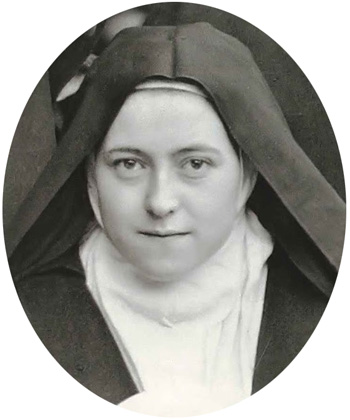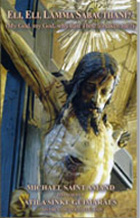Catholic Virtues
 |
 |
 |
 |
 |
 |
 |
St. Therese of the Child Jesus,
Expiatory Victim
The great sinners are those sick children upon whom the treasures of the Church are lavished for their cure. The great saints are the healthy and active children who at all times replenish new riches in the treasury of the Church to replace those depleted by the sinners.
This allows us to establish a correlation: For the great sinners, the great expenses of the Church's treasury. Either these great expenses are supplied by new outpourings of generosity from God and holy souls, or the graces become less abundant and the number of sinners increases.
 From this it follows that nothing is more necessary for the expansion of the Church than the continual enrichment of her supernatural treasure with new merits.
From this it follows that nothing is more necessary for the expansion of the Church than the continual enrichment of her supernatural treasure with new merits.
Obviously, merit can be acquired by practicing virtue anywhere. But there are, in the garden of the Church, souls that God particularly destines for this purpose. They are the souls that He calls to the contemplative life in reclusive convents, where these privileged souls dedicate themselves specially to loving God and expiating for the sins of men.
These souls courageously ask God to send them all the trials that He so desires, if by so doing numerous sinners can be saved. God scourges them incessantly, in one way or another, picking the flowers of piety and sacrifice from them in order to save new souls by those merits.
There is nothing more admirable than to consecrate oneself to the vocation of expiatory victim for sinners. All the more so since there are many who work, many who pray, but who has the courage to atone for the sins of others?
This is the most profound sense of the vocation of the Trappists, the Franciscans, the Dominicans and the Carmelites, among whom flourished the suave and heroic St. Therese of Lisieux. Her method was special.
 Practicing full conformity to to the will of God, she neither asked for suffering nor refused it. Let God do with her whatever He wanted. She never asked God, or even her superiors, to take away pain from her. She never asked God or her superiors for any mortification. Her path was one of complete submission. And, in matters of the spiritual life, a full submission is equivalent to a full sanctification.
Practicing full conformity to to the will of God, she neither asked for suffering nor refused it. Let God do with her whatever He wanted. She never asked God, or even her superiors, to take away pain from her. She never asked God or her superiors for any mortification. Her path was one of complete submission. And, in matters of the spiritual life, a full submission is equivalent to a full sanctification.
Her method is characterized by another important note. St. Therese of the Child Jesus did not practice great physical mortifications. She limited herself simply to following the prescriptions of her Rule. But she strove for another type of mortification: to constantly make a thousand small sacrifices. She never followed her own will. Never the comfortable, the delightful. Always the opposite of what the senses requested.
And each of these small sacrifices was a small coin more in the treasury of the Church. A small coin, yes, but one of sterling gold: The value of each small act consisted of the love of God with which it was done.
 And what meritorious love! Saint Therese did not have visions, not even those sensible and natural movements that at times can make piety so amenable. She had an absolute interior aridity, an arid but admirably ardent love, her will directed by Faith, firmly and heroically adhering to God in the involuntary and irremediable atony of the senses. An arid and efficacious love, synonymous with, in a life of piety, a perfect love...
And what meritorious love! Saint Therese did not have visions, not even those sensible and natural movements that at times can make piety so amenable. She had an absolute interior aridity, an arid but admirably ardent love, her will directed by Faith, firmly and heroically adhering to God in the involuntary and irremediable atony of the senses. An arid and efficacious love, synonymous with, in a life of piety, a perfect love...
A great path, a simple path. Is it not simple to make small sacrifices? Is it not simpler not to have visions than to have them? Is it not simpler to accept sacrifices instead of asking for them?
The simple path, the path for everyone. The mission of St. Therese was to show us a path that all can follow. May this help us us to travel that royal road that will lead not just one or several souls - but entire legions - to the altar.


This allows us to establish a correlation: For the great sinners, the great expenses of the Church's treasury. Either these great expenses are supplied by new outpourings of generosity from God and holy souls, or the graces become less abundant and the number of sinners increases.

Obviously, merit can be acquired by practicing virtue anywhere. But there are, in the garden of the Church, souls that God particularly destines for this purpose. They are the souls that He calls to the contemplative life in reclusive convents, where these privileged souls dedicate themselves specially to loving God and expiating for the sins of men.
These souls courageously ask God to send them all the trials that He so desires, if by so doing numerous sinners can be saved. God scourges them incessantly, in one way or another, picking the flowers of piety and sacrifice from them in order to save new souls by those merits.
There is nothing more admirable than to consecrate oneself to the vocation of expiatory victim for sinners. All the more so since there are many who work, many who pray, but who has the courage to atone for the sins of others?
This is the most profound sense of the vocation of the Trappists, the Franciscans, the Dominicans and the Carmelites, among whom flourished the suave and heroic St. Therese of Lisieux. Her method was special.

Her method is characterized by another important note. St. Therese of the Child Jesus did not practice great physical mortifications. She limited herself simply to following the prescriptions of her Rule. But she strove for another type of mortification: to constantly make a thousand small sacrifices. She never followed her own will. Never the comfortable, the delightful. Always the opposite of what the senses requested.
And each of these small sacrifices was a small coin more in the treasury of the Church. A small coin, yes, but one of sterling gold: The value of each small act consisted of the love of God with which it was done.

A great path, a simple path. Is it not simple to make small sacrifices? Is it not simpler not to have visions than to have them? Is it not simpler to accept sacrifices instead of asking for them?
The simple path, the path for everyone. The mission of St. Therese was to show us a path that all can follow. May this help us us to travel that royal road that will lead not just one or several souls - but entire legions - to the altar.

The Little Way: a great & simple path

Posted June 5, 2024














